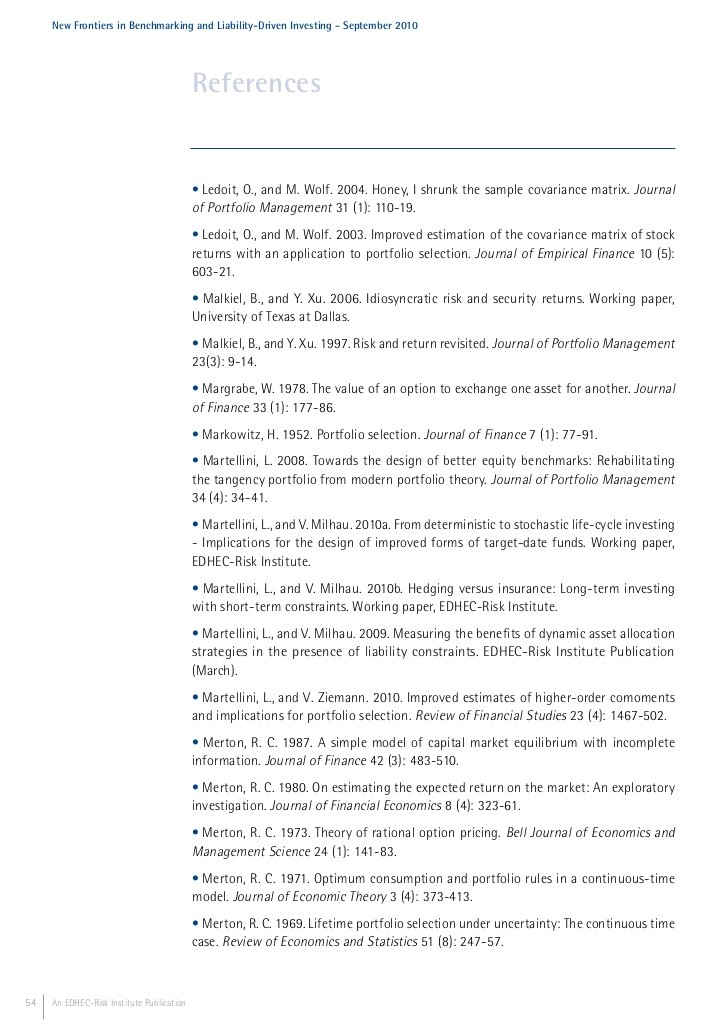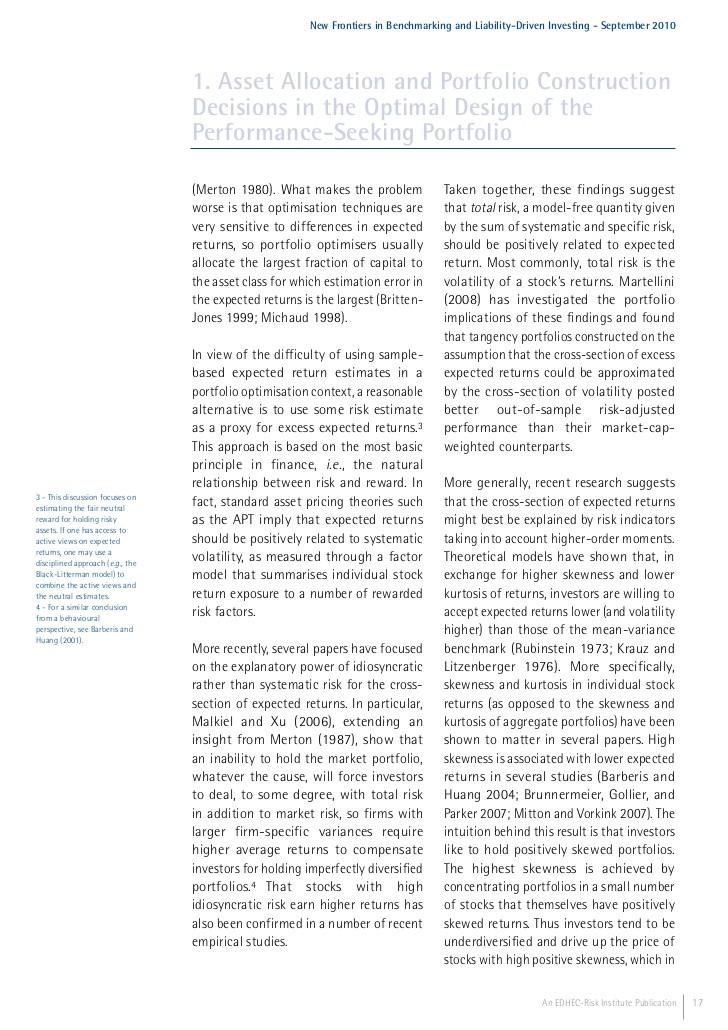EDHECRisk Quantification of Hedge Fund Default Risk
Post on: 16 Март, 2015 No Comment

Alternative Investments — January 24, 2007
Quantification of Hedge Fund Default Risk
Working Paper
A revisited version of this paper was published in the Journal of Alternative Investments. Fall 2006.
In a working paper entitled ‘Quantification of Hedge Fund Default Risk’, which led to the publication of a full article in the Fall issue of the Journal of Alternative Investments. Jean-Renй Giraud and Stйphane Daul of the EDHEC Risk and Asset Management Research Centre, together with co-author Corentin Christory, examined numerous cases of hedge fund default in order to find the common factors behind fund failures.
By their very nature, hedge funds allow the investor to be exposed to different risk factors such as volatility, counterparty or liquidity risk. Exposure to these risk factors is not only a source of superior risk-return trade-off but also the very essence of hedge funds’ extensive diversification possibilities compared with traditional investments. More importantly, it is interesting to note that the exposure to these risk factors is also a diversifiable risk, as it has been demonstrated that hedge funds exhibit low correlations amongst themselves.
These advantages do not come without a downside. Gaining exposure to alternative risk factors usually requires trading activities that can be considered less conventional than in the long-only universe. These include high leverage, investments in illiquid instruments, potentially high portfolio turnover and non-vanilla OTC contracts. While these technicalities do not represent an issue in themselves (the trading techniques of hedge funds usually originate at the desks of proprietary trading dealing rooms which have been operating under such constraints for years), they do however carry a level of operational risk for which the investor receives no premium.
In addition to the very specific nature of their trading activity, hedge funds have developed as a new industry segment at a very significant pace over the last decade and the regulatory environment in which they operate is being updated accordingly. Nevertheless, hedge funds, by their very entrepreneurial nature, remain relatively small financial organisations where issues such as independent risk control, governance or the four-eyes principle are not yet the norm.
Hedge fund operational risk has attracted enormous attention from the public, probably because of several fraudulent and high profile cases that the financial press has highlighted over time. Not only does involvement in a hedge fund scandal result in possibly significant financial losses, the reputation aspect of the event may carry even greater weight for investors and third parties such as administrators, auditors and prime brokers involved directly or indirectly in the cases.

All studies available today on hedge fund failures have in common that they are limited to a macro analysis of the most widely publicized cases, allowing an estimate of the overall level of risk supported by investors to be assessed. While a good estimation of that risk has confirmed the need for improving due diligence processes, governance principles and the interest of some forms of managed accounts, it does not however help the investor in correctly taking into consideration a quantitative measure of the likelihood of a fund defaulting in the portfolio construction process.
The objective of this working paper is to investigate the statistical properties of hedge fund failures further and attempt to identify essential risk factors that can tentatively explain why one fund is more likely to default on its investors and lenders than another. This attempt to quantify hedge fund operational risk will allow the reader to better assess the importance of extreme non-financial risks and understand what mitigation techniques beyond naпve diversification could be of use. The development of a full quantitative model is far beyond the scope of this paper.
The paper investigates two statistical methods in order to shed some light on the risk profile of hedge funds. In an initial stage, the paper explores the mechanisms behind a hedge fund failure in more detail and proposes a causal model that could explain the various scenarios that can occur when a hedge fund defaults.
A second stochastic analysis of a sample database of 100+ fund failures allows a loss model for operational failures to be proposed. This model then allows us to better understand the limitations of a naпve diversification that aims to reduce the loss of a single event by reducing its share of the overall portfolio. Finally, the paper provides some conclusions that should be useful to portfolio managers when constructing a portfolio of funds of hedge funds by allowing them to better factor the various operational risks into their portfolio construction phase.
Attachments














